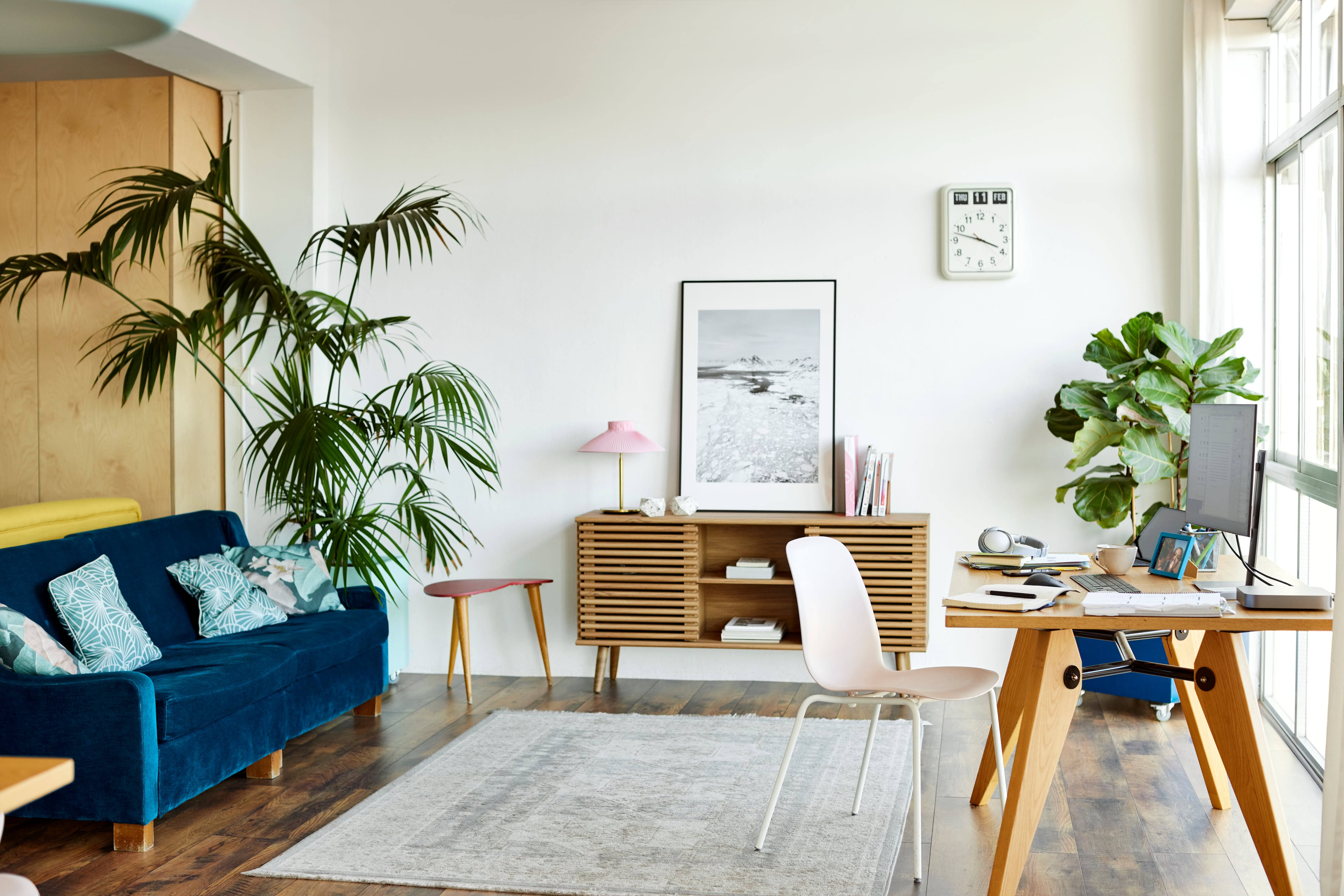From the rise of smart appliances to the portrayal of futuristic furnishings in movies like Clueless, technology and home decor can go together like a comforter and duvet cover. But, over the past few months, technology’s impact on the shelter space extends far beyond physical items like programmable curtains or an app-enabled light bulb: With the help of AI, it’s possible to create spaces that don’t even exist. Architectural designers like Maria Dudkina and Carlos Bannon are using platforms like DALL-E and Mindjourney to push the envelope on what’s possible within your four walls. (A caviar-covered bed frame? Sounds delicious. An apartment with an evacuation slide? Why not?)
An AI-designed space can make your wildest decorating dreams—and, at the very least, a few likes on Instagram—but how is it impacting the design industry? After all, while these fantastical spaces can be dreamed up in the blink of an eye, these visuals are not based in the reality of a tight budget or structural limitations. So what gives? Can AI really change the interior design industry as we know it?
Julie Massucco Kleiner, principal and co-owner of Massucco Warner Interior Design in Los Angeles and Seattle, says not so fast. “It produces flat and almost freakishly too perfect images, and honestly we don’t see ourselves starting to use it any time in the near future,” she shares. “Designing a home is so personal, and the time and care and attention to detail and tailoring spaces for our clients could never be replicated by a bot.”
Admittedly, Massucco Kleiner hasn’t used AI in her design projects; however, that doesn’t mean she hasn’t talked about the trend with her clients. “Just this month, we were having a conversation with a client who brought up how unoriginal a lot of the AI images flooding social media feeds [look],” she says. “If AI designs your and your friend’s kitchens—and you have common interests, hobbies, and online browsing commonalities— the design AI spits out might look too similar.” The result, she says, is a “Stepford wife situation with home design.”
Massucco Kleiner might think AI can stunt the creative process, but Los Angeles-based designer Linda Hayslett argues if 3D renderings can already create unrealistic expectations, just imagine what this new technology can do.
“Sometimes a chair looked great initially, but in reality, the light is different than in a realistic rendering, so it doesn’t look great there in reality and needs to be placed elsewhere,” Hayslett says. “Clients can get stuck on the renderings and that’s where the creativity of change can get stifled.”
Make no mistake, pursuing wildly imaginative spaces during a midday social media scroll is incredibly fun. That said, your chances of finding, say, an inflatable bed that conveniently doubles as a staircase—or the resources to make your own from scratch—is very, very low. Even if your most uninhibited AI dreams could become a reality, wouldn’t you need to hire an interior designer—or, at the very least, a contractor—to make it happen?
Hayslett says using AI can be a “slippery slope;” however, it doesn’t necessarily need to be banished from the design world. “I see AI as a tool that can help, as long as the design community understands that,” she explains. “There needs to be some guidelines on using and crediting AI, instead of not saying anything [and] making people believe they are completed projects.”
In fact, Massucco Kleiner has even heard of designers using it for industry-adjacent tasks such as streamlining permit approvals. But, if you’re looking for a creative way to flex your design muscle, it’s best to do it yourself or enlist a pro. “You would be much better served by hiring a professional designer in some capacity,” she says. “Even if it’s not realistic to hire a designer for the full project scope, find somebody who can consult hourly.”
This story was originally published on sunset.com. You can read it here.









